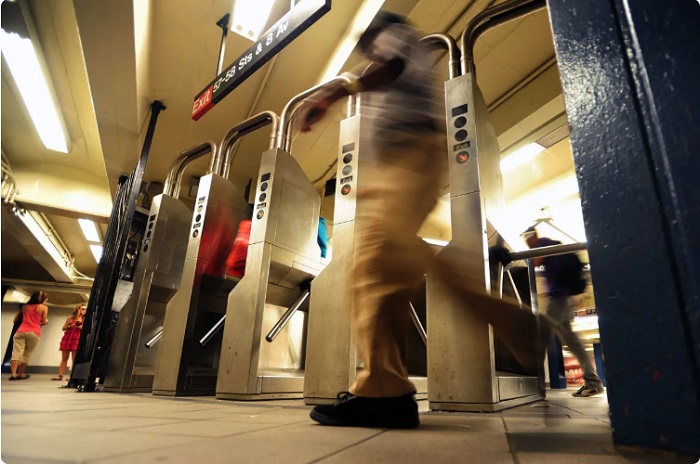MTA modifying turnstiles to recapture $45.6M in skipped fares

The MTA is slowly modifying turnstiles throughout the system to keep would-be fare-jumpers from slipping through.
Maintenance teams have begun making adjustments to the turnstile mechanism to keep people from “back-cocking” the fare gates — pulling backward on a turnstile arm just far enough to slip through.
“We’ve all seen it — someone pulls back on the bar just far enough to step over it when reversing to go in a forward direction,” Demetrius Crichlow, the MTA’s senior vice president of subways, said at a board meeting.
“This modification restricts the back turn of the turnstile and closes the gap that people regularly use to evade the fare,” he explained.
Fare evasion on the subway system cost the MTA $285 million last year, according to the agency’s May fare evasion report.
Of that, Crichlow said, $45.6 million in skipped fares is due to turnstile back-cocking.
In a video shown at Monday’s board meeting, the modified turnstiles appear to thwart a man who tries to slip through two different machines at the Bowling Green station.
MTA officials said only 26 turnstiles have been modified so far.
The agency plans to have about 240 turnstiles modified by September, MTA spokesman Tim Minton told the Daily News, and to have the upgrade installed in all 3,479 turnstiles throughout the system by the middle of 2025.
“We could probably expedite it if we hired additional folks,” Crichlow said when asked if the work could be done faster, “but we don’t have the additional resources to hire people for this project.”
The undertaking will cost about $2 million, he said.
“Even if we get a portion of that back, it will save the company a ton of money,” Crichlow noted.
The subway head acknowledged that the changes do not keep would-be back-cockers from becoming turnstile-jumpers.
But Crichlow said his department is exploring additional deterrents, from sleeves that heighten turnstile arms to large vertical panels between the machines, all meant to make it harder to vault over the fare gate.
Additionally, the MTA has removed a slew of locks on emergency gates that were accessible with an easily obtained master key that circulated among employees. Only the FDNY now has keyed access to the emergency gates, Crichlow said.
Long-term, the agency plans to replace turnstiles with more modern fare gates that have motorized, plexiglass panels or doors to discourage jumping and high-tech sensors to keep track of evasion.
Crichlow said the process of seeking designs and contractors for the next-generation fare gates would begin by the end of the year.
